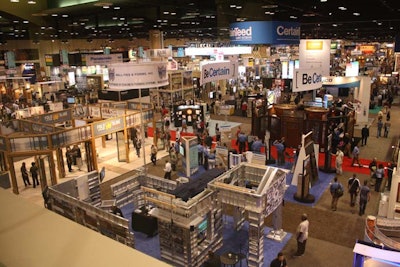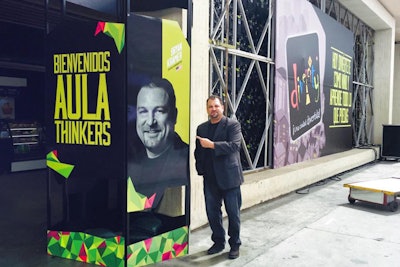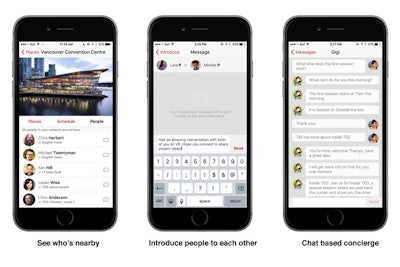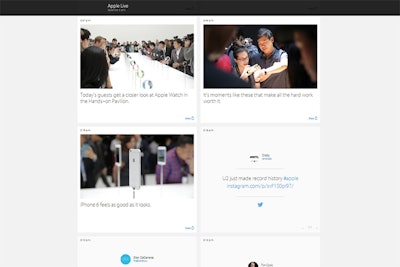
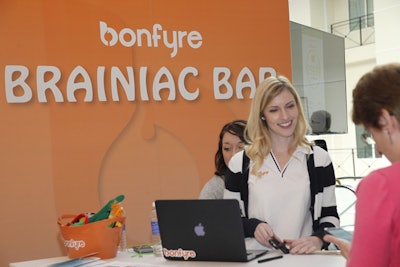
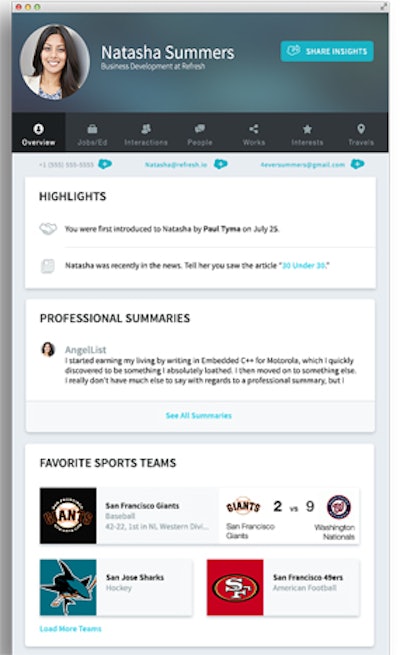
Planners interact with dozens of people—vendors, speakers, sponsors, and others—in the months leading up to an event. Refresh is a Web and mobile app that provides background information on people before a meeting to facilitate better engagement. Users link their calendars to the app and then the system searches public information from more than 100 sources around the Web, including Twitter, LinkedIn, Facebook, Yelp, and Instagram, about people they will be meeting. Users receive insights such as shared interests, work history, and recent blog posts. The system can also be used to store notes about people after a meeting.
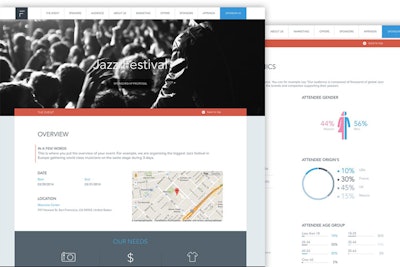
Sponseasy allows planners to create professional sponsorship proposals in minutes. Organizers input information about the event, demographic information about the audience, and the various options for sponsorships. The look of the proposal can also be customized with pictures, colors, and effects. Planners distribute the proposal to potential sponsors by sharing a link. During the campaign, planners can track activity through the system’s online dashboard. In July the company announced a partnership with Eventbrite to allow them to import their event information. The system is currently free to use in beta.
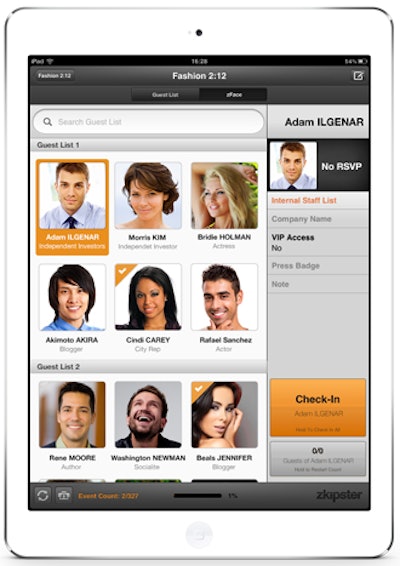
Zkipster is an app to manage check-in at non-ticketed events. In 2014 the company added several optional tools. Zface creates a photo-based guest list by searching the Internet for each guest name and pulling as many as 10 photo suggestions. Planners also can manually upload photos. The pictures are stored in a secure Zkipster account so they can be accessed for future events. Zsocial allows hosts to identify and connect with social media influencers at their event by integrating Twitter and Instagram handles into the guest list. As guests check in, the system can send them an automated welcome message that provides the event hashtag. After the event, Zsocial allows hosts to monitor and pull reports on social media interactions regarding their event. Zprint provides instant printing of name tags by connecting the app to a wireless printer.
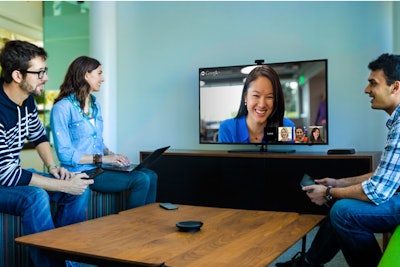
Google Chromebox for Meetings is a videoconferencing system based on Google Hangout technology. Hardware includes a Chromebox unit from either Asus, HP, or Dell, a high-definition camera, a combined microphone and speaker unit, and a remote control. As many as 15 participants can join the video meeting from other conference rooms or their laptops, tablets, or smartphones. One click of the remote starts the meeting without the need for access codes. The system is integrated with Google Apps, so invitations can be sent directly through Google Calendar. The system starts at $999.
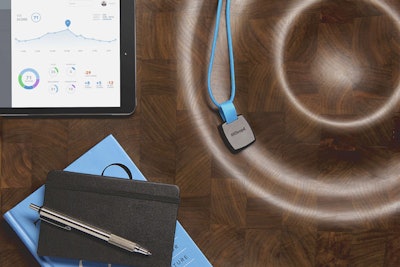
Loopd is a system that uses Bluetooth low-energy beacons to provide a variety of location-tracking tools for planners and attendees. Beacons placed around the event communicate with chips the attendees wear on a lanyard. As guests visit exhibitor booths, attend education sessions, and meet other attendees, the system tracks those movements and saves the information. At any time, guests can log into the Loopd app to see a history of those interactions, as well as receive marketing materials from exhibitors they visited. Booth staff also receive traffic information and can follow up with attendees. For networking, users can tap their badges together to share their contact information; otherwise, the system will automatically collect data when two people are standing near each other for a predetermined amount of time. Planners receive real-time information about traffic flow and also data regarding retention, engagement, dwell time, and amount of connections made for attendees and exhibitors. The company plans to release an update in February.
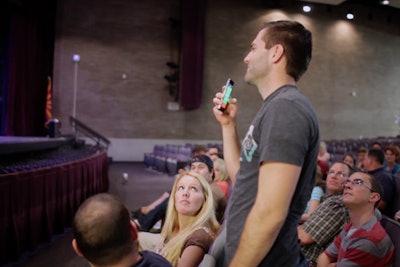
Crowd Mics turns guests’ smartphones and tablets into wireless microphones, so they can be heard over the sound system in a meeting room or auditorium. Guests download the Crowd Mics app and enter a code to join the event. When they want to ask a question or make a comment, they tap their phones, and the presenter will see a list of people requesting to speak in the order they came online. The presenter can enable an individual microphone, mute a microphone, or put the system in “open mic” mode so anyone can comment. Audience members can also submit text comments to the presenter through the Crowd Mics app, and the system offers polling functions.
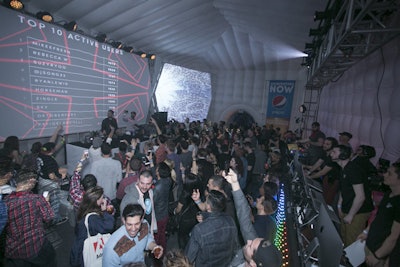
Lightwave has created sensor-equipped wristbands that measure the wearer’s biometric data, such as movement and body temperature. The technology debuted at a Pepsi-sponsored music event at South by Southwest in March. The data is transmitted wirelessly to the Lightwave system, which allows organizers to make adjustments in real-time. “For example, we thought the lighting and projections would be very engaging, but actually the environment was too bright. So when we noticed the accelerometer readings were not where we wanted them to be, we dimmed the lights and suddenly people started dancing more,” said Rana June, Lightwave founder and C.E.O. After an event, Lightwave provides data such as which moments got the most reaction from attendees or those that caused a lull in the room. Hosts also can choose to send guests their personal data to share on social networks.
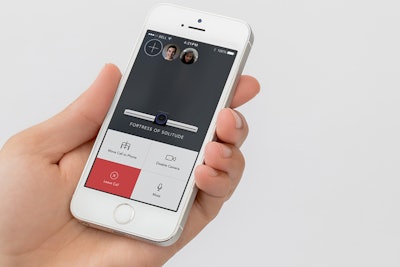
Highfive is new video conferencing system from two former Google engineers. For $799, users get a sleek device that can sit on top of a television or mount to a wall and includes a video camera, microphone array, and HDMI and Ethernet connections to connect to the Highfive online system. Users initiate a video call through the system’s app or browser and send the URL to as many as 10 other participants. Using Bluetooth low energy, the system recognizes if participants are in a room with a Highfive device and then, by swiping across their smartphone screen, the video transfers to the television in the room—without cables. The system also automatically displays video of the person talking.
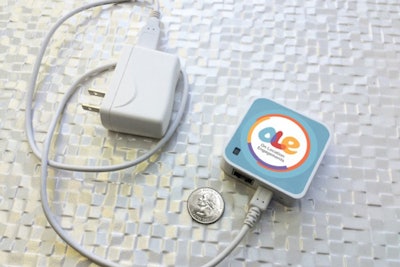
On Location Engagements is a location-based content delivery system for events. Beacons placed throughout a venue “wake up” smartphone screens when attendees are within a designated range, which can be anywhere from 5 to 30 feet. Planners determine what content is transmitted by each beacon, such as maps, videos, surveys, product information, or sponsor materials. Planners also can turn certain beacons on or off to guide an attendee through an event based on that person's job title, marketing objectives, or other goals. Attendees can create their own tour based on what interests them most by entering key words. When a tour is selected, only the beaconed zones associated with that tour would appear on the map. After the event, planners receive data such interactions per beacon, length of stay at each beacon, and traffic patterns at the venue.
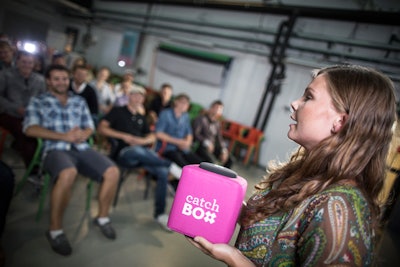
Catchbox is a wireless microphone to pass—or even throw—among speakers or audience members. The device consists of a microphone capsule secured with a magnet inside a soft, colorful cube. Catchbox communicates with an included receiver that can be connected to any sound system. To avoid unwanted noises, internal sensors mute the microphone when the cube is in motion. The company has two products: Catchbox 2.4 for groups of as many as 100 people no more than 100 feet apart and Cathbox Pro for an unlimited number of people within a range of 1,000 feet.
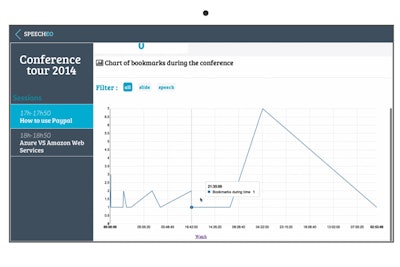
Speecheo is a new online tool for presentations designed to make it easy for audience members to take notes and also reveal to speakers and planners the most popular parts of their presentations. Attendees can view presentation slides and materials on their mobile devices and take notes alongside them. They can also capture audio and create bookmarks, so after the presentation they can review specific parts and share them on social media. Speakers and planners receive detailed analytics regarding which parts of the presentation were the most captured and shared. The system is currently in beta testing. The company expects to launch the public version in January.
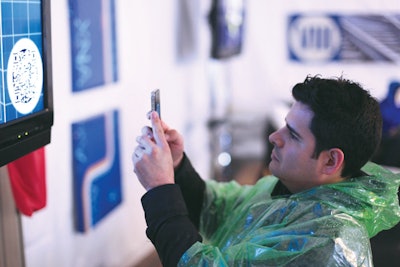
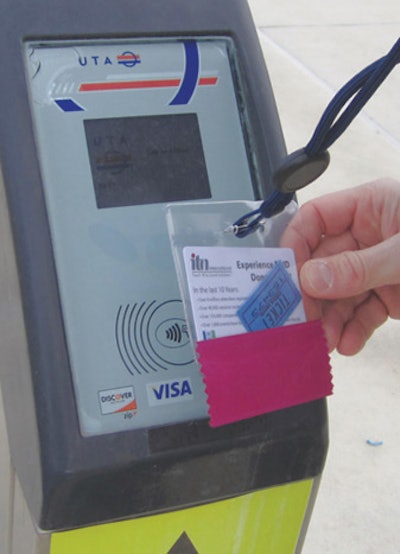
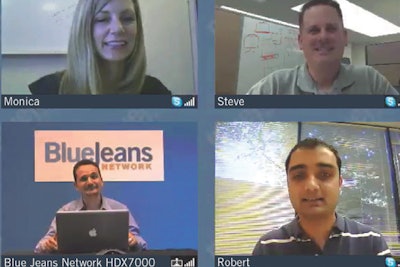
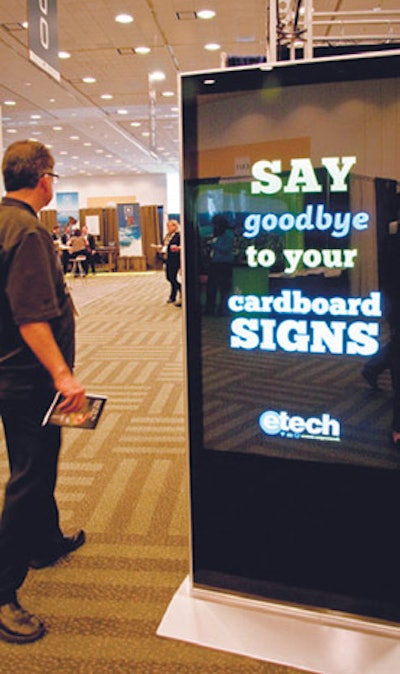
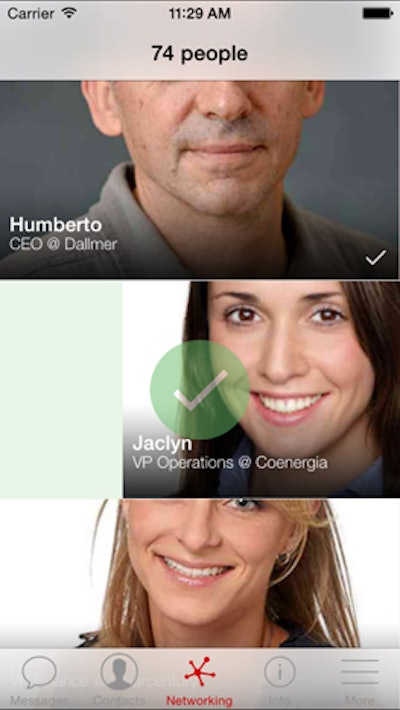
Next week, Topi plans to unveil a new networking tool that takes inspiration from the popular dating app Tinder. “People have nicknamed Topi the ‘Tinder for conferences.’ We liked it, and we now are launching a new feature that allows attendees to signal interests in connecting with others,” says David Aubespin, Topi C.E.O. As a user scans the profiles of other attendees, he or she can swipe across the app to indicate an interest in meeting that person. Once the recipient accepts the request, the app instantly creates a chat room where the two can communicate. Aubespin says the company developed the tool after data showed that attendees often check the profiles of other guests yet do not initiate contact. “This makes the whole experience a lot more fun and less awkward,” he says. In December, Topi added an option for planners to create customizable websites for events powered by the same data they upload for the mobile app. There's also an optional registration system.
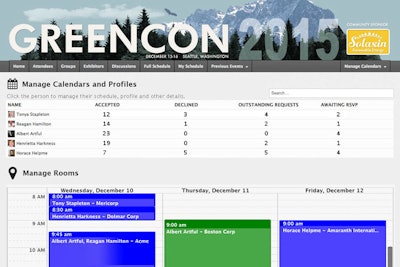
On Monday, Pathable plans to unveil a new feature that will make it easier for one person to manage the attendance of multiple people from a company at a conference or event. “The company can designate an administrative assistant, and that person gets total control over everybody from the company that’s attending,” says Jordan Schwartz, C.E.O. of Pathable. "They can schedule meetings for them, manage their profiles, figure out which educational sessions they’ll attend, [or] manage a company-sponsored suite." Additional updates released in the past few months include integration with Salesforce, enhanced interactive mapping tools that can be used for education sessions and private meeting rooms, and the creation of a document management system integrated with ScholarOne. In December, Pathable also unveiled a free self-serve version for events of as many as 100 people.
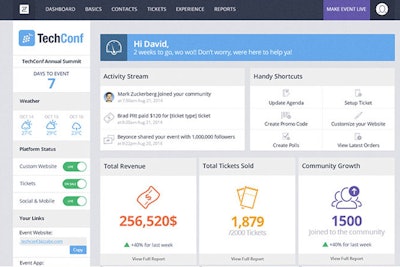
On February 18, event app system Bizzabo launched its Event Success Platform, a management system that centralizes several tools for planners. The system includes an event website, ticketing, a mobile app, email marketing, networking functions, contact management, and on-site check-in. It also offers real-time analytics on each feature to track an event’s progress. “We wanted to free the industry from a reliance on multiple siloed tech solutions that increase an event organizer’s workload, and minimize their ability to measure success and limit productivity,” says C.E.O. Eran Ben-Shushan.
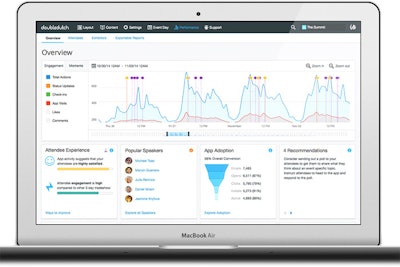
In mid-February, DoubleDutch unveiled “Event Performance,” a new analytics platform that allows planners to monitor content and engagement in real time using data from the company’s mobile app. “Most analytics reports generated by app engagement can provide post-event data. We seek to also provide visibility into event performance on the day of the event, so organizers are not in the dark,” says Lucian Beebe, the company's vice president of product. For example, organizers can track which content is being accessed the most and send push messages to promote less popular sessions. The system also shows the most popular conversations taking place in the app so planners can see what matters to attendees. The system has a built-in sentiment analysis tool and an Engagement Score that indicates how many attendees are interacting with the app throughout the event.
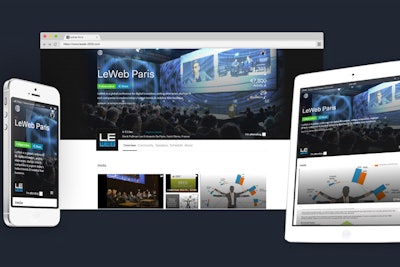
Conferize, which began as an event discovery and recommendation system, is now offering custom websites that are tied into the existing social platform. Using the new Conferize Organizer, planners can create a website with their own URL and custom welcome messages and subpages. The sites are tied to the Conferize social networking and content-sharing community, so users can follow the event for free. “It gives event organizers the chance to convert a ‘maybe’ visitor to a ‘definitely’ attendee,” says company C.E.O. Martin Ferro-Thomsen. The website features are a complimentary add-on to the existing Conferize plans, which are free for events of as many as 100 people and for events that are free, with additional pricing plans from there. The new feature was released February 12.
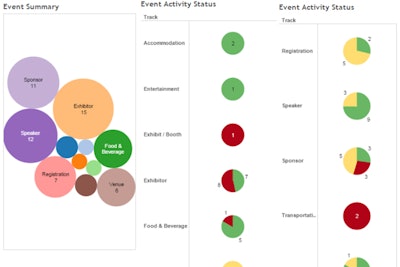
On February 17, Goombal released a new Customer Experience Marketing Platform. The system is intended to enable chief marketing officers to “deliver the perfect customer experience across all events for their corporate and product brands,” according to a press release. The platform includes “Ad-Hoc Event Collaboration Rooms,” which keep all related conversations and documents in a Pinterest-like tool. The system also offers real-time check-in and lead capture that integrates with customer relationship management apps. New real-time reporting and dashboards analyze performance across multiple events and can be used to create reports for distribution.
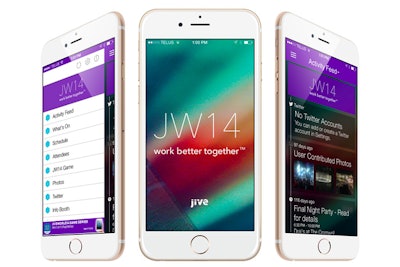
QuickMobile Enterprise 2.0, which launched in January, is the latest generation of the company’s enterprise mobile app and analytics platform for meetings and events. The cloud-based system provides a mobile solution that links data from a company’s internal and external meetings and events with other business data. For example, when a customer attends a user conference, the system’s analytics would capture that person’s survey results, content accessed, and education sessions attended so the sales team knows what to address during future client visits. “The focus is now the R.O.I. for the event, about contributing to the bottom line and about providing valuable meeting data to help organizations build better relationships with key audiences. And with mobile technology, all this is now possible,” says C.E.O. Craig Brennan.
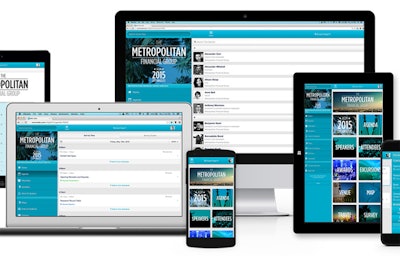
EventMobi, which began as a Web-based app, now gives planners the option of launching a native app to four app stores—Apple, Android, Blackberry, and Windows—with just one click. This means attendees can access the app from any type of device and through a Web browser, even if they are offline. EventMobi has also updated its integrated registration system to handle payment processing and ticketing. It also added an audience response system that includes pre- and post-event surveys, live polling, and real-time anonymous question submission to speakers.
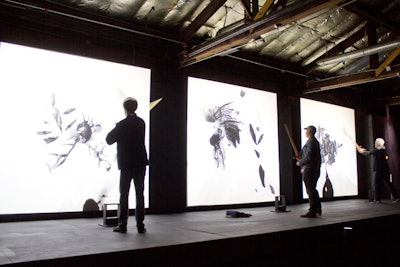
HBO’s SXSWesteros house promoted the cable network's hit series Game of Thrones and featured an interactive sword-playing game where attendees used Bluetooth-enabled swords to hit targets on a screen. Before the activity, participants posed for photos that were then incorporated into the game.
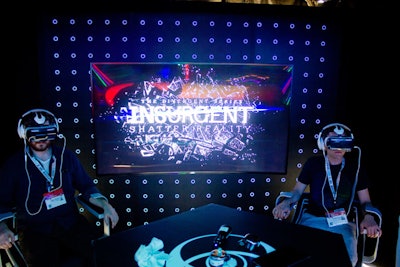
Samsung housed the “Insurgent Shatter Reality” virtual reality experience. Using Samsung VR technology, guests could visit the realm from the Divergent film series.
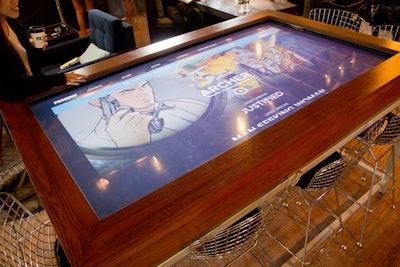
A large interactive table at the center FX’s Fearless Factory showcased the television channel's mobile app. Smaller tablets were built within side tables, too.
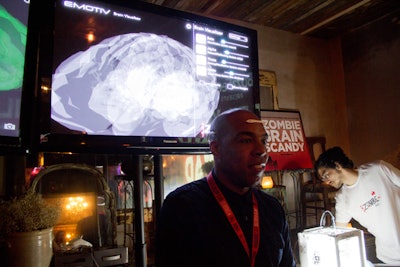
At the premiere party for the CW’s iZombie hosted by BuzzFeed, Emotiv headsets were provided to guests who were able to see their brain activities in response to eating different types of 3-D-printed candy made on the premises. Guests were allowed to email themselves a copy of their scans.
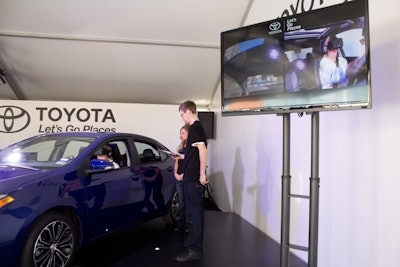
At the fifth annual Fast Company Grill, sponsor Toyota unveiled an Oculus Rift distracted driving simulator. Participants donned the device and sat in the driver’s seat of a Toyota and replicated a drive through an active and noisy street.
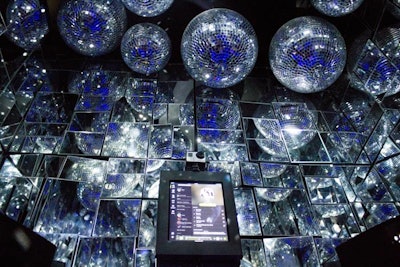
Users entered the Bose Southbooth, covered in mirrors and disco balls, and chose a single song to add to the official Spotify SXSW playlist.
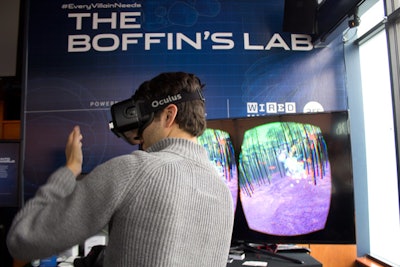
Boffin’s Lab featured a demonstration of Leap Motion headset technology, where guests were taken on a virtual reality through a forest.
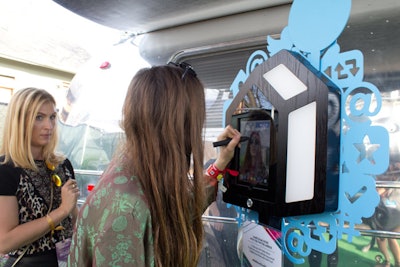
The department store featured a Twitter mirror in the artist area at its Make Some Noise house. Users were able to take photos of themselves, add additional content like text and drawings, and then tweet out the image through the brand’s Twitter account.
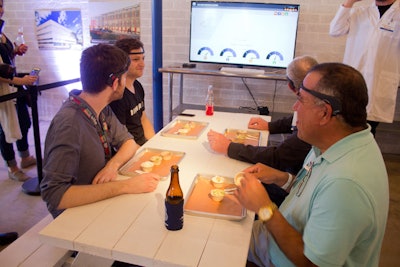
At General Electric's BBQ Research Center, participants put on color-coded brainwave scanners to see how their brains reacted while eating different barbecue cuts and sides.
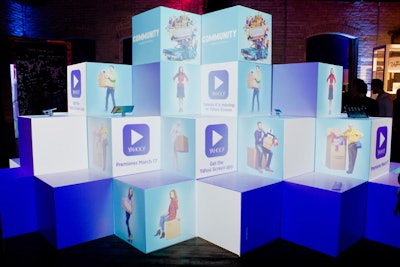
Yahoo showcased the brand’s digital magazine content through projections on a cube set up near the entrance of the venue during the daytime. For evening events like the Community and Sin City Saints parties, images from the shows were shown.
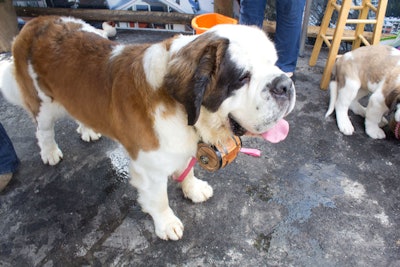
Mophie helped rescue attendees with dying phone batteries by sending out St. Bernards with a Mophie power reserve unit within a barrel attached to the dog’s collar. Those seeking help had to take a screenshot of their dying battery screen as well as their location, and tweet at the brand. The St. Bernards were housed at the MophieRescue Lodge, where the products were showcased. The organization also worked with the St. Bernard Rescue Foundation to raise awareness of adoptable St. Bernards across the country.
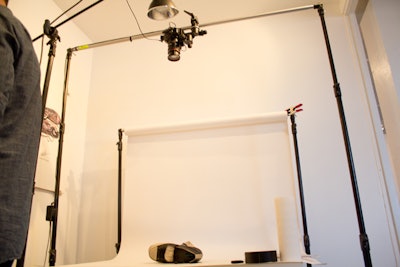
Extending its Made by You initiative, Converse photographed professional portaits of attendees’ sneakers in the style of the ad campaign. The images were then displayed on screens in the space. For those who weren’t wearing the brand, lucky guests were given free shoes at random.
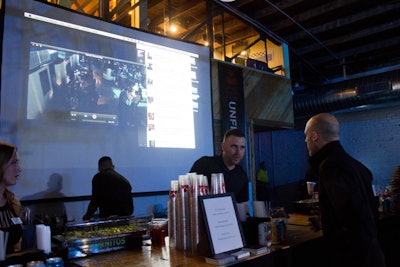
The premiere party for Unfriended, which was screened at SXSW, featured live streams of the current event throughout the space, alongside a Twitter feed of the party’s hashtag, mimicking the film’s plot centered on live video chats.
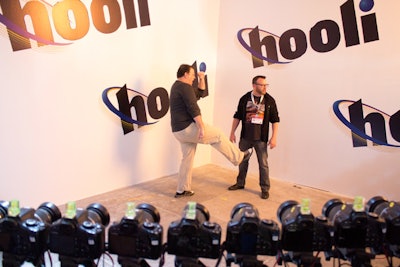
HBO’s Silicon Valley returned to the Mashable House with several activations, including Scheimpflüg’s Time Slice 360-degree photo booth, the images from which guests could email to themselves.

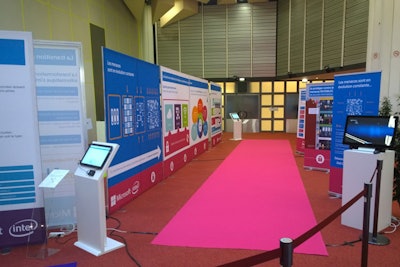
Dell is using N.F.C. for the first time during its Dell Solutions Tour, which is taking place in 20 European cities through November. Zappit is printing plastic N.F.C. badges on site at each event. After attendees visit the product displays, they tap their badges on a kiosk to launch a survey. To encourage participation, the system is linked to a prize drawing.
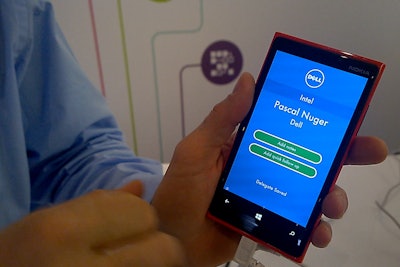
Exhibitors participating in the Dell Solutions Tour, currently taking place in cities around Europe, are using Zappit’s N.F.C.-reader app. By tapping the device to an attendee’s N.F.C.-enabled badge, the app retrieves that person’s contact information and provides a place for the exhibitor to add notes.

At Mobile World Congress in Barcelona, Spain, in February, attendees could use their N.F.C.-enabled devices to access event information and download materials at kiosks, redeem food coupons at catering outlets, and participate in a treasure hunt. Organizers estimate 51,000 N.F.C. transactions were made during the four-day event. In addition, users could create an N.F.C. photo badge within the event’s mobile app, which expedited entry to convention facilities. Sponsor Incipio offered its Cashwrap N.F.C.-enabled cases for free so iPhone users also could participate.
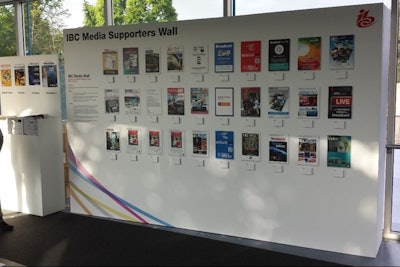
At the International Broadcasting Convention in Amsterdam in September, organizers created a wall displaying magazines from 30 sponsoring publishers. Below each magazine was a Btag—a self-contained N.F.C. hot spot provided by ITN International. Attendees simply tapped their N.F.C.-enabled badges to the Btag to receive a digital copy of the magazine, eliminating the need for publishers to provide bins of printed copies.
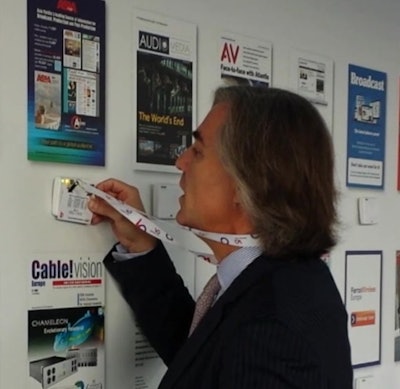
At the end of each day, attendees received an email that included links to each publication they had “touched” on the media wall.
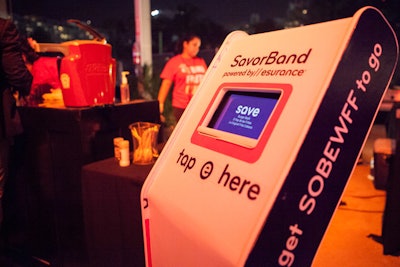
At the Food Network South Beach Wine & Food Festival in February, sponsor Esurance provided N.F.C.-enabled wristbands each night in the North Venue. Guests tapped the bands on tablet computers displayed next to each chef and sponsor station to save information about food items, recipes, and other perks in an online account. ClearHart Digital, which created the wristbands, calls the system a “digital memory bank.”
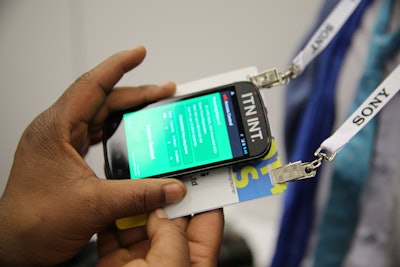
At the International C.E.S. in January, ITN International created and distributed 160,000 N.F.C.-enabled badges at more than two dozen sites, including at the airport and designated hotels. Guests used the badges to check in to educational sessions and also to provide contact information to exhibitors that were using ITN’s app.
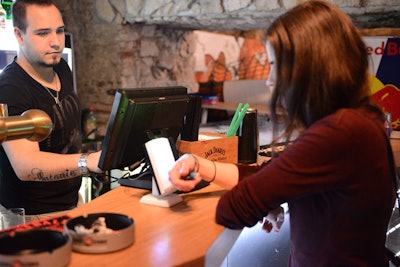
In late 2013, Intellitix began using its IntelliPay cashless payment bands at festivals around Europe, including the Majales festivals in the Czech Republic. Users create an online profile to link the band with a credit card or PayPal and then could tap it on a reader to purchase food, merchandise, and other items around the venue. The company will use the system at two upcoming events in North America: Mysteryland USA in New York later this month and Digital Dreams in Toronto in June.
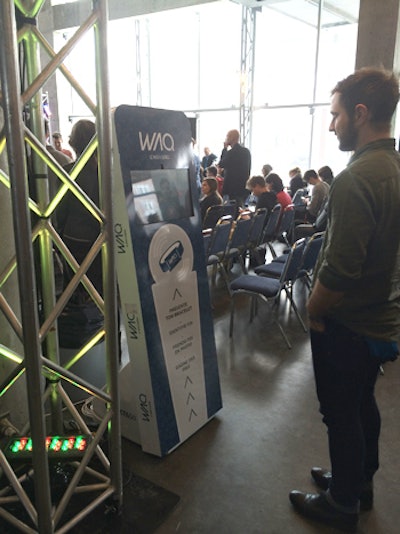
The 450 attendees at Web à Québec in March wore N.F.C.-enabled bracelets from Connect & Go, which could be used for Facebook check-ins and photo sharing from six sponsored kiosks throughout the event.
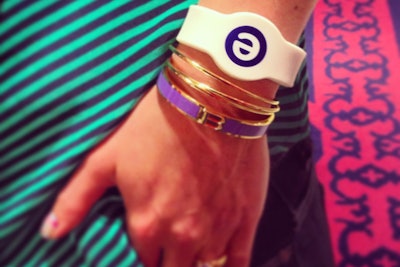
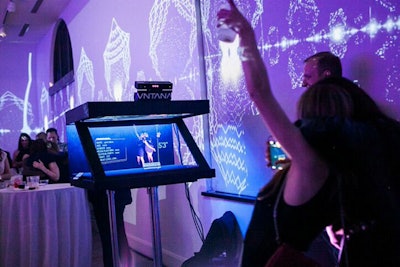
The New Media Party in Washington, returning for its second year, featured several inventive uses of technology at events. Produced by Event Farm, the party incorporated sponsors such as Vntana, which created holograms of guests that were then projected onto the walls of venue Carnegie Library. Other sponsors included Lyft, Microsoft, AOL, and Yelp, which created a listing for the event and allowed guests to post reviews and photos.

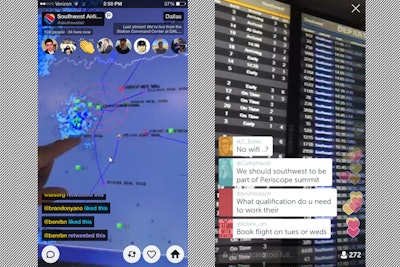
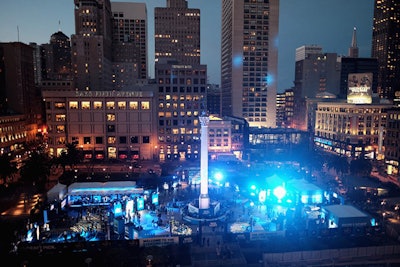
Bud Light took over San Francisco's Union Square to create a 30,000-square-foot "fan haven." Open to the public aged 21 and over, the activation featured a beer garden serving Bud Light in commemorative cans and bottles; proceeds from Bud Light sales benefited the United Way of the Bay Area's poverty-fighting programs. There were also interactive football-theme activities, including virtual opportunities to catch a football, block opponents, and do a touchdown dance. Mosaic once again produced Bud Light's Super Bowl activations.
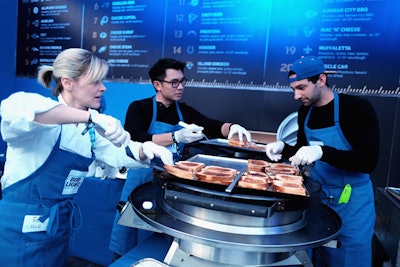
The activation served up 32 grilled cheese sandwich variations, each inspired by an N.F.L. team. The sandwiches were created by Top Chef alum Casey Thompson. Options included the "Cheese Steak," inspired by the Philadelphia Eagles.
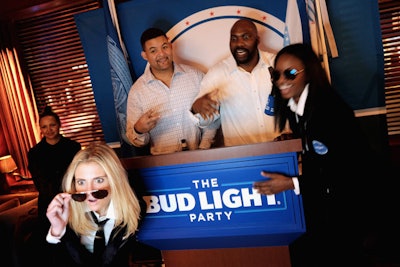
Instead of its traditional Bud Light Hotel, the brand hosted the "Bud Light Party" at the Clift Hotel. The activation was inspired by a presidential campaign headquarters and coordinated with the beer brand's new marketing campaign. Guests were invited to snap photos at the same podium that was featured in its Super Bowl commercial, which featured actors Amy Schumer and Seth Rogen.
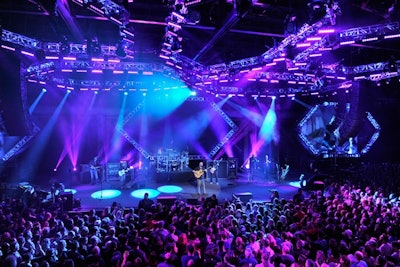
This year, DirecTV partnered with Pepsi to present a series of events surrounding the Super Bowl. Held at Pier 70, the events were meant to showcase music, technology, and art. The Thursday-night kickoff, dubbed DirecTV and Pepsi Super Thursday Night, featured a concert from Dave Matthews Band. Organizers wanted the concert venue to provide maximum fan engagement and brought in a cutting-edge sound system, arty designs, and projection-mapped photo walls. Murphy Productions built and designed the venue. Kuki Design handled decor.
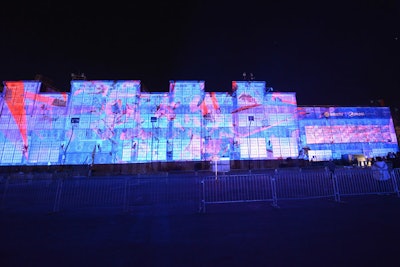
Projection-mapped images appeared on the exterior of the venue at Pier 70. Both the DirecTV and Pepsi logos also appeared in lights on the building's façade.
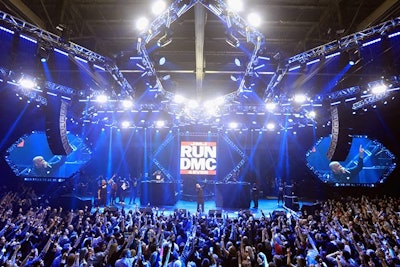
On Saturday night, DirecTV once again hosted its "Super Saturday Night" party, which is open by invite only and is known for featuring big-name talent. (Last year, Rihanna and Kanye West appeared.) This year's event took place at the same Pier 70 venue that hosted the Thursday- and Friday- night concerts, and Run-DMC was one of the acts.
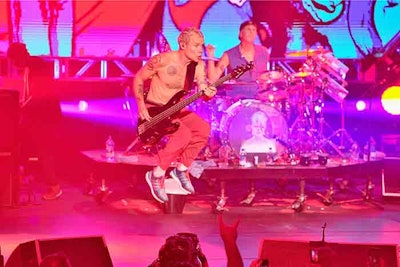
Red Hot Chili Peppers also performed at the Saturday night bash. The band put on a 60-minute set which featured songs such as "Under the Bridge," "Californication," and "Otherside."
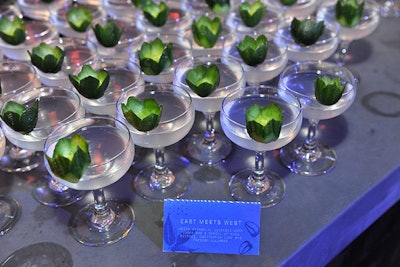
Additional events from Pepsi included the private Kola House preview at Pier 70 on Friday. The pop-up event provided a sneak peek at Kola House, a lounge and event space the brand will open this spring in New York's meatpacking district. At the event, guests could sample specialty drinks created by so-called "cocktail creator and flavor chemist" Alex Ott. Drinks included the white-cranberry "East Meets West," which contained ingredients such as Persian cucumber and California lime.
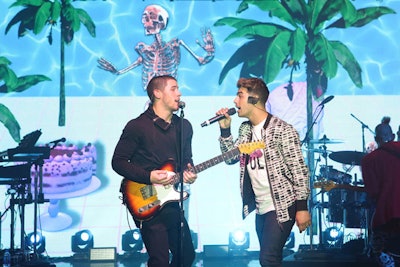
ESPN, a returning Super Bowl party host, held its bash on Saturday night at Fort Mason. With production and design from Event Eleven, the event featured a performance by Nick Jonas and his surprise guest, brother Joe Jonas.
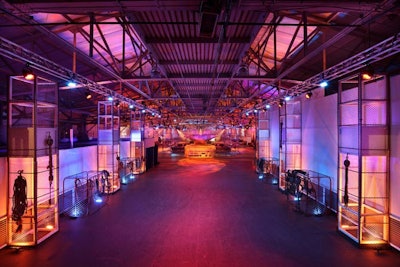
Fort Mason is a former military port facility, and Event Eleven's design paid homage to the building's nautical past. Elements of decor included dock pylons, fishing cages with pulleys, nautical ropes, and other thematic props.

Inside, there were custom chandeliers made from Edison bulbs and nautical ropes, candlelight, and areas devoted to various sponsors. Express, for example, hosted a station where guests could pick up screen-printed T-shirts with the "ESPN the Party" logo. At the bar, servers poured drinks from sponsors Coors Light and Mercedes-Benz. Lux Lounge Event Furniture Rentals provided some of the rentals.
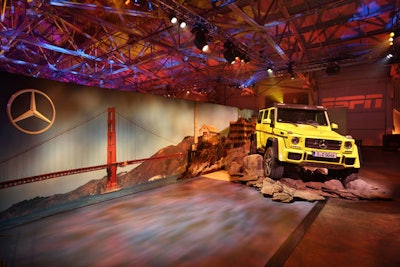
A photo activation from Mercedes-Benz let guests pose in front of a model vehicle and a backdrop featuring San Francisco's iconic Golden Gate Bridge.
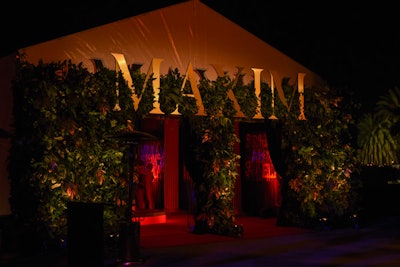
Another returning event host, Maxim, formed a new partnership with Los Angeles nightclub Bootsy Bellows this year. The two brands hosted an event on Saturday night at Treasure Island. The custom venue was fitted with a concert-style sound system, LED video walls, and V.I.P. tables with bottle service. Featuring performances from A$AP Rocky and Lil Wayne, the event was produced by Karma International.

Dodge was a sponsor and hosted a "Thrill Ride Experience" that let guests test out its high-performance vehicles.
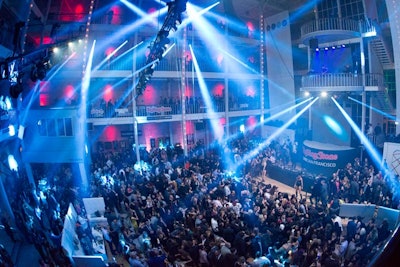
Rolling Stone partnered with Talent Resources Sports to host its party at the San Francisco Design Center on Saturday night. The venue's look recalled the interior of a nightclub.
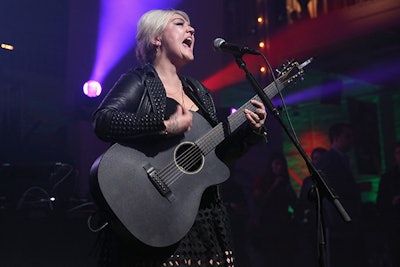
The event featured entertainment from several acts, including singer Elle King (pictured), DJ Irie, and Avicii. Toast handled production, talent, and celebrity wrangling.
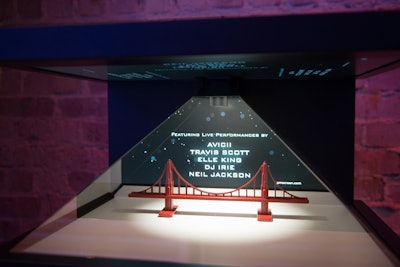
The event's talent lineup was featured in glowing signage that appeared behind a miniature mock-up of the Golden Gate Bridge.
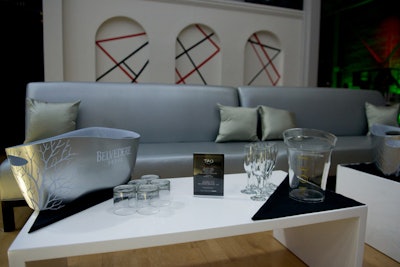
A new activation was a V.I.P. lounge from the nightclub chain Tao. Filled with plush lounge furniture, the space offered bottle service from Belvedere vodka.
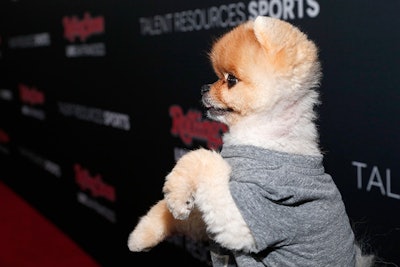
The entrance was lined with a branded step-and-repeat, where celebrity guests including actors, athletes, musicians, and Jiff the Pomeranian posed.
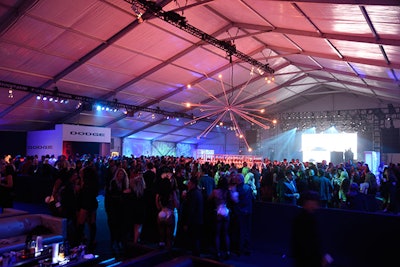
Playboy hosted its party in a tent spanning Lot A of AT&T Park on Friday night. "This year, we are literally building our venue from the ground up, with a structure tent within [the park]," said Amanda Civitello, Playboy's vice president of events and promotions, before the event. "This allows us the freedom to design the event from scratch to ensure party guests have an amazing experience, as well as integrate our advertisers organically into the overall look and feel." Civitello worked with the Visionary Group to produce and design the event, which drew some 2,000 guests.
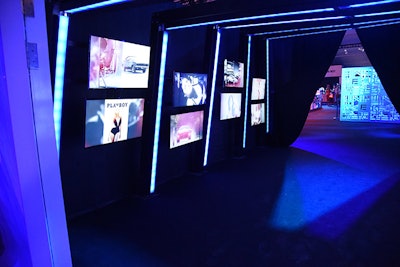
Sponsors included Dodge. As V.I.P. guests arrived, they traveled through a "time portal tunnel" that showcased visuals from Playboy and Dodge's past, including photos of vintage cars and magazine covers.
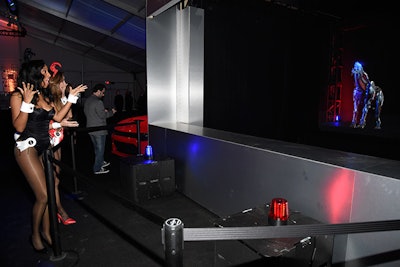
Additional activations from Dodge included an interactive hologram of the brand's signature "hellcat."
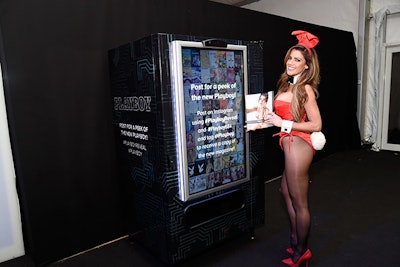
Playboy's March issue will be the first to feature the brand's highly publicized redesign. To get a sneak peek at the issue, guests could post to Instagram to receive a copy from a social-media-activated vending machine.
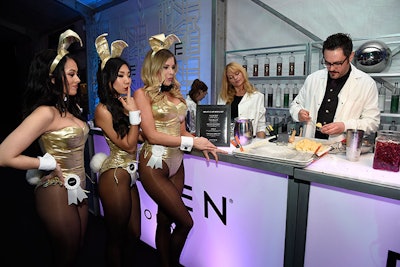
Effen was another sponsor. The vodka brand hosted a "Molecular Mixology" bar, featuring a cocktail list curated by local bar Benjamin Cooper. Drinks included the Effen 75, made with Effen vodka, elements of bergamot citrus, orange liqueur, and a champagne float of spiced cranberry bubbles. The event also featured 24 Playboy Playmates in the brand's iconic bunny costumes.
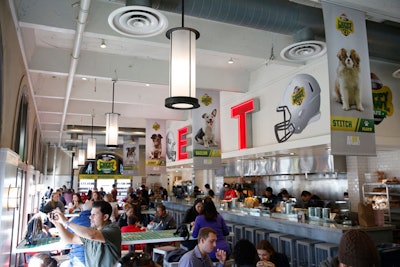
Animal Planet aired its popular Puppy Bowl on Sunday. In honor of the televised event, the company staged the Puppy Bowl Cafe in the Ferry Building Thursday to Sunday. The café served snacks and drinks daily and was open to the public.
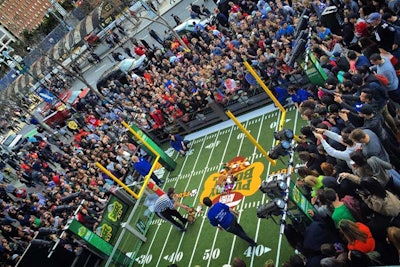
The activation featured a live replica of the Puppy Bowl each day and drew more than 5,000 guests daily.
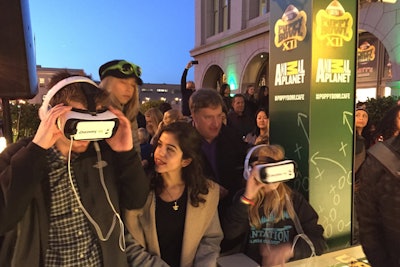
For the first time this year, guests could use virtual reality devices to feel as though they were watching the puppies' "scrimmage" from the center of the field.

New Era teamed up with the N.F.L. to host the three-day New Era Style Lounge in the Parlor room inside the Battery from Thursday to Saturday. The event, which marked the first major Super Bowl activation from New Era, invited V.I.P. guests to stop by and receive gifts from Levi's, Bose, Colourpop, Acustom Apparel, IV Doc Vitamin Bar, Fresh, Noir, and Reddit. New Era also provided customized caps. A OK produced the activation.
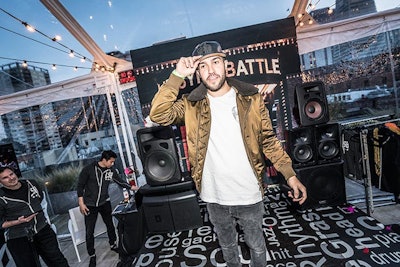
Activities included a "Lip Sync Battle," which pitted celebrities against athletes. The fun competition was hosted by SpikeTV.
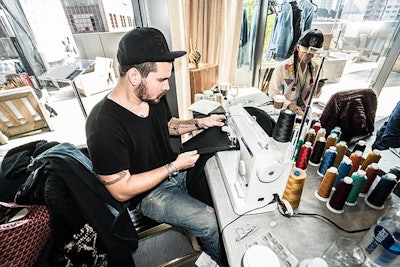
Levi's hosted a custom denim bar at the lounge (pictured). Guests could also customize a set of Bose headphones.
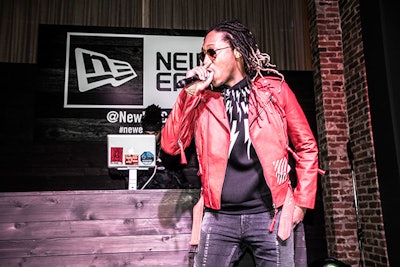
On Saturday night, the style lounge hosted a party that featured a performance from rapper Future (pictured). DJ Mia Moretti opened the night, and Diplo was the final act.

The Bleacher Report hosted its first-ever Super Bowl party at the Mezzanine on Friday. Presented by Go90 and with sponsorship from Jim Beam and Bose, the night featured a performance from Zac Brown Band. The night's beneficiary was the Iraq and Afghanistan Veterans of America.

The entrance to the event was decked with custom hashtags and prompts for guests to download Go90, which streams live sports.
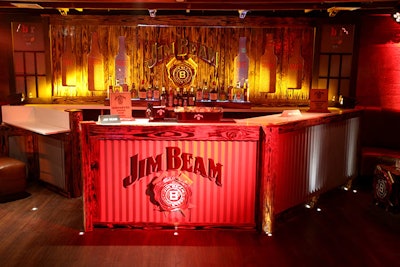
Jim Beam set up a custom bar, where specialty cocktails included a Jim Beam Apple & Soda.
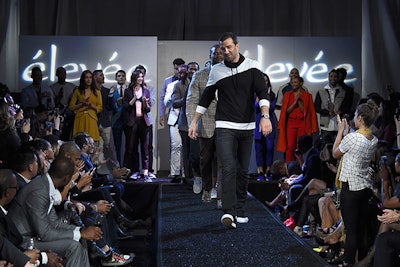
Two charitable events, Glazer Palooza and Suits and Sneakers, joined forces this year to host one event. Presented by H.Wood Group and Vault Experiences, the event was held on Wednesday at Pier 27. The event centered on a fashion show produced by Phoenix Fashion Week, which featured athletes walking in a fashion show. A portion of proceeds benefited Merging Vets & Players.
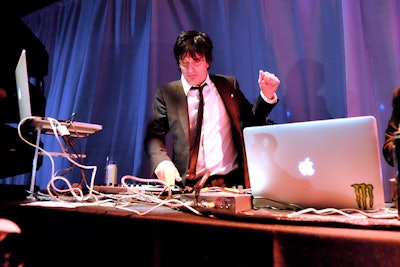
Rocker Tommy Lee was one of the event's DJs.
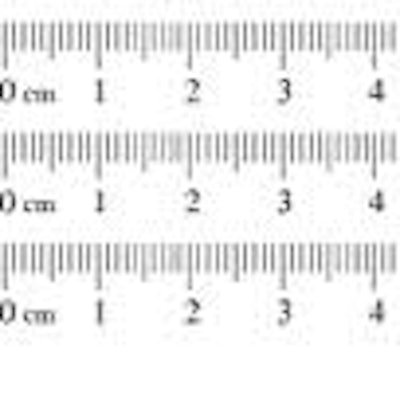
Large-scale events held outside of San Francisco included the City of Santa Clara's "Super Community Celebration," which drew some 10,000 guests on Sunday. Produced by Caravents, the event featured a performance by Huey Lewis and the News, as well as a fireworks show sponsored by Silicon Valley Power.

